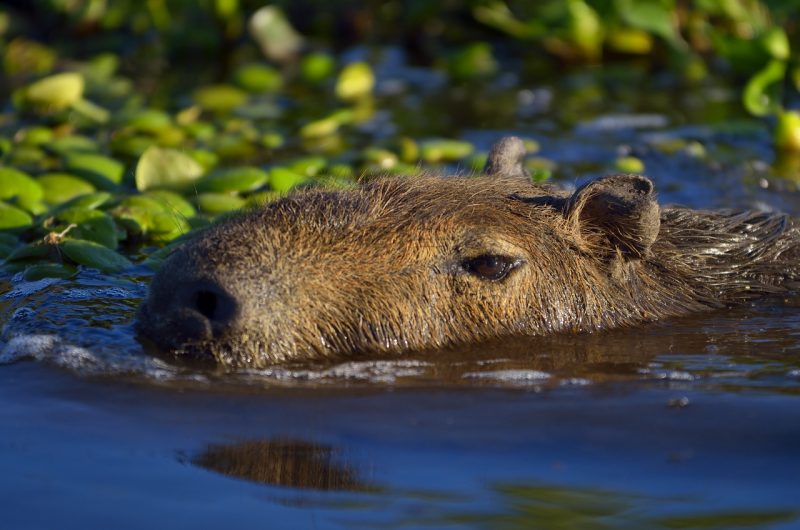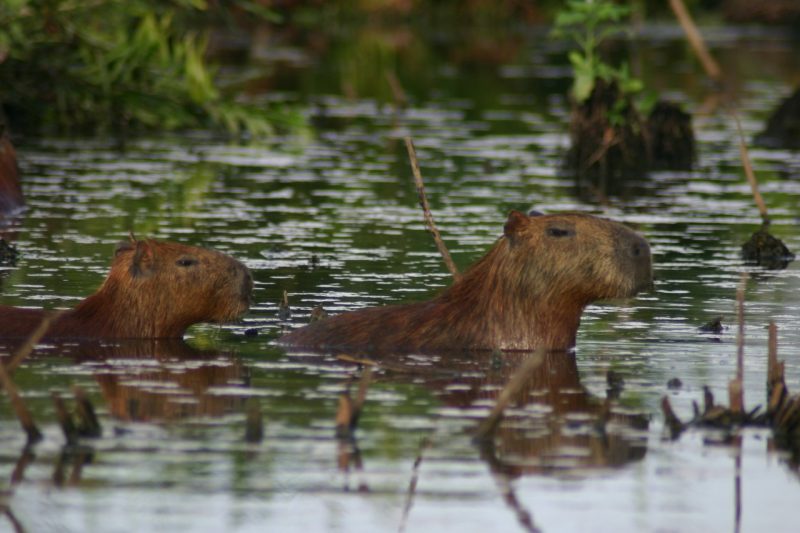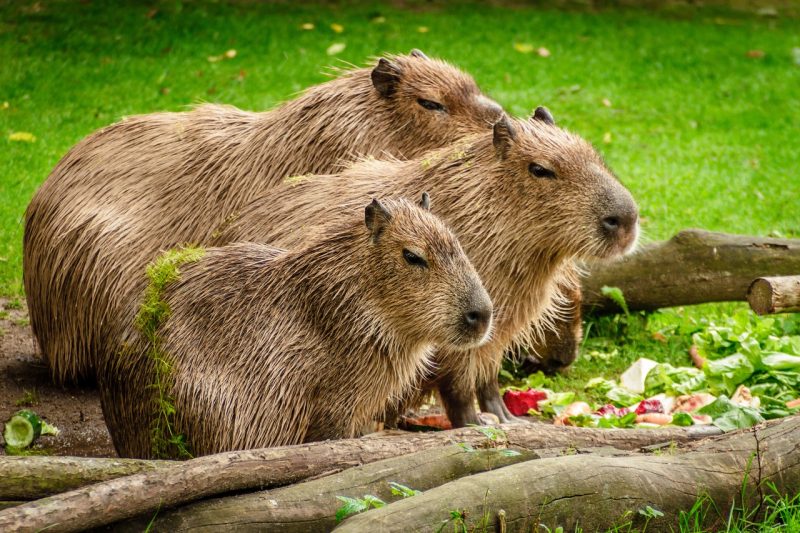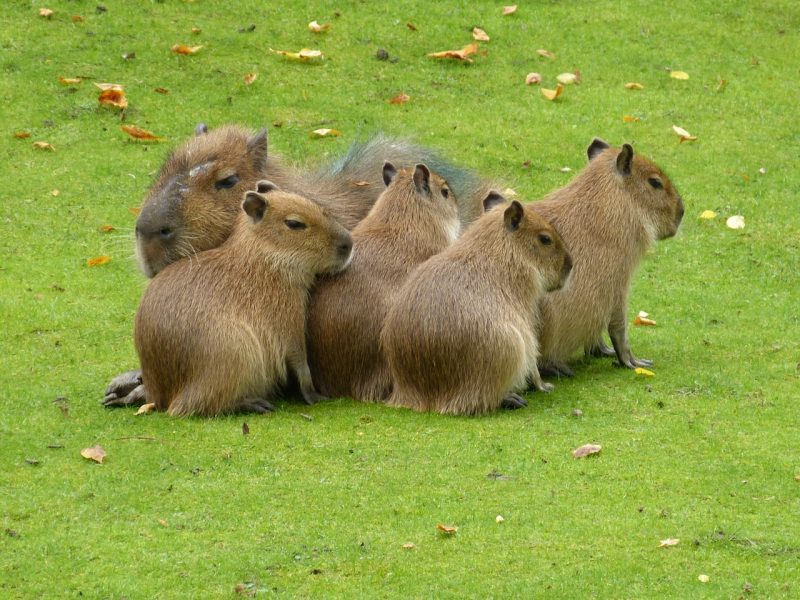Meet capybara – the friendliest creature on Earth
The capybara is an animal native to South America, is the size of a big dog, and looks like its closest relative, the guinea pig. They inhabit dense forests and savannas located near water. It’s the largest rodent on the planet, hangs out with a lot of different species, and lives in groups of 10-20, and sometimes even 100 individuals. Capybaras always live near water because their dry skin needs a lot of moisture. They like napping in the humid soil of marshland, and sometimes even mud. The group usually consists of more females, but it’s led by alpha-males. Here are some interesting facts about the herbivorous, large but cute animal.
South American crocodile is one of its best friends

The cute capybara doesn’t have too many enemies or predators. One of the most dangerous threats that doesn’t think the capybara is so cute is the anaconda. Apart from that, though, every other animal is a friend of the large rodent, including the South American crocodile which likes to hang out in the same area, but never attacks.
Baby capybara can’t swim
Capybaras spend most of their lives in water because they are skillful swimmers and divers. But, when they’re babies, they can’t swim at all. Therefore, they spend the first few months of their lives close to the water’s edge, hiding in the bushes. Baby capybaras nurse on every female in the group, which confirms their need of bounding and taking care of others. Beta males are responsible for the vigilance and protection of the female-dominant group.
They are active at dawn and dusk

When a capybara feels comfortable with the surrounding environment, it stays busy during the dawn hours and hides at night. If it feels unsafe, it can quickly turn into a nocturnal animal that eats, mates, and moves around only at night.
Capybara can stay underwater up to 5 minutes
Their evolution is connected tightly to the water because they spend all the time close to bodies of water. It’s no surprise, then, to find that capybaras can stay submerged underwater for up to 5 minutes. Being vegetarians, they mostly feed on aquatic plants. Their skin needs to be kept moist all the time, so living near water is the only choice they have.
Capybaras are picky eaters
In the wild, capybaras can be seen separating out the different aquatic plants and eating only their favorite ones. By the way, they munch 8 pounds of grass per day.
They can get sunburned

Unlike most other furry animals, capybaras can be burned by the sun. The reason for this is their thin coat dries quickly once they leave the water. As soon as their fur dries, the skin underneath starts burning. To prevent this, the capybaras use a natural sunscreen, the mud. It’s the same method that the elephant uses, as do some humans when in an extreme survival situation.
Their sexual authority is right on their nose
Scientists were wondering what makes one capybara an alpha male of the group? The answer lies on their nose. All capybaras have a scent gland on their noses called a morillo. Female morillos are small and underdeveloped, while the male’s is bigger and represents a symbol status within their community. A male’s morillo size is connected to their testes size and shows their fertility. They rub their morillos on the grass to mark their territory and to attract more females.
Capybara mate underwater

Staying true to their nature, capybaras mate underwater. Their mating season has its culmination during the wet season, but the truth is that they mate during the whole year and are extremely sexually active animals. When they start the process, the alpha male is the only one allowed to mate, but later one of the other males join the session. This keeps the capybara gene diverse.
If you have any comments then please drop us a message on our Outdoor Revival Facebook page
If you have a good story to tell or blog let us know about it on our FB page, we’re also happy for article or review submissions, we’d love to hear from you.
We live in a beautiful world, get out there and enjoy it. Outdoor Revival – Reconnecting us all with the Outdoors.





